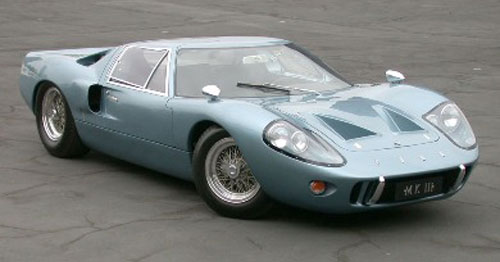Styling Misfires:
The 1989-1997 Ford Thunderbird

They never could figure it out.
The nose, I mean. They tried four times—four—over the course of the tenth-generation T-bird’s eight-year model run and still couldn’t get it right.
Sure, the various noses were representative of certain engine options and trim packages, and it’s common for automakers to tweak a car’s appearance based on the extras the buyer specifies, but still—it’s noteworthy that none of Ford’s fascia treatments of the ’89-’97 car is successful.

The design of the rest of the car isn’t much to write home about either. It clearly apes the proportions of the BMW E24 6-Series in profile—not a bad car to copy styling-wise—though with far less panache and character. That said, the lines are relatively straightforward, so it shouldn’t be that hard to pen a fascia that coheres with the rest of the car, right?

What’s the issue? Simply put, the bumper is too big relative to the headlight-grille area. The bumper-to-grille ratio of the ’89-’97 T-bird’s inspiration, the BMW E24, is much more balanced and thus, successful. Compounding the problem is the fact that in two iterations of the car’s nose, prominent bumper intakes draw far too much attention to the ill-proportioned area, like a pimple on an oversized nose. Furthermore, the later “refresh” cars’ bumpers and headlights (shown above and at top) have a curvy, organic quality completely at odds with the boxiness of the rest of the car. There’s a huge disconnect.

Arguably the most successful nose is that of the pre-refresh non-Super Coupe car, shown above. The area around the emblem is closed, and the visually-overpowering bumper intakes are absent. It’s more understated—but very bland, and still a long way from attractive.
Underneath the skin, the tenth-gen T-bird was a nice car, if a couple hundred pounds overweight. It was technically interesting, featuring independent rear suspension and the option of a supercharged V6 and 5-speed manual transmission. Later cars could be spec’d with the 4.6l SOHC version of Ford’s very competent Modular V8 engine, albeit only with an automatic attached to the back. It’s a shame the styling didn’t live up to the chassis and powertrain’s promise, contributing to the ’89-’97 car’s demise, and ultimately, except for the last-gasp, retro-themed ’00-’05 car, the end of Ford’s storied line of personal coupes.
Image credits: binatani.com, auctionsamerica.com, autoevolution.com
Editor’s note: This post is part of an ongoing series wherein we discuss unsuccessful cars whose styling was their overlooked (or denied) Achilles heel. Read the other installments here:



















